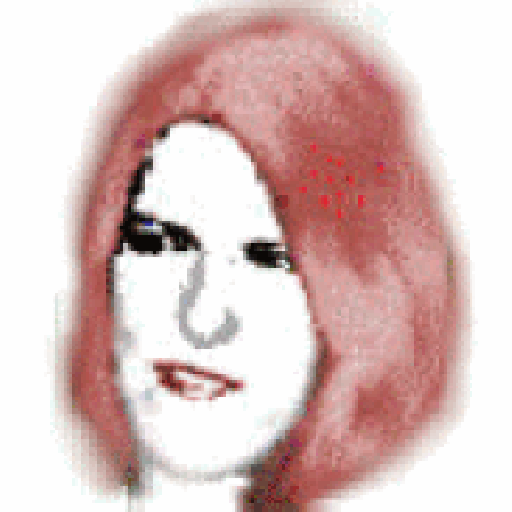
Did English originate in Turkey?

Mapping the Origins and Expansion
of the Indo-European Language Family
Bouckaert et al.ABSTRACT
There are two competing hypotheses for the origin of the Indo-European language family. The conventional view places the homeland in the Pontic steppes about 6000 years ago. An alternative hypothesis claims that the languages spread from Anatolia with the expansion of farming 8000 to 9500 years ago. We used Bayesian phylogeographic approaches, together with basic vocabulary data from 103 ancient and contemporary Indo-European languages, to explicitly model the expansion of the family and test these hypotheses. We found decisive support for an Anatolian origin over a steppe origin. Both the inferred timing and root location of the Indo-European language trees fit with an agricultural expansion from Anatolia beginning 8000 to 9500 years ago. These results highlight the critical role that phylogeographic inference can play in resolving debates about human prehistory.
Isnt it wonderful when personal conjectures you are passionate about are validated over accepted theory? As an armchair archaeomythologist (say that three times without stuttering), I have the greatest respect for the concepts of Marija Gimbutas while disagreeing with some of her conclusions, particularly, the European Expansion Theory and the Kurgan Hypothesis.
According to Marija Gimbutas, Kurgan culture came into existence in the first half of the 5th millennium BCE when, by means of domesticated horse, horseback-riding, and wheeled transport, pastoral people overwhelmed the peoples of the Russian steppe north of the Caucasus and reached the borders of indigenous Europe in the Dnieper basin. Gimbutas Kurgan theory does not depict a primordial Urheimat or Indo-European homeland like the Aryan Invasion Theory it replaced, but recounts a specific situation created by social and economic conditions, especially a hierarchical/patriarchal social structure and horse domestication. From the mid-5th millennium onward, the pastoral people of South Russia came into close contact with Old Europe, and from around 4300 BCE these pastoralists started a westward push that eventually caused the proposed great matrilinear civilization of indigenous Europe to disintegrate.
Unfortunately for Rask, Grimm, Gimbutas and even Professor Colin Renfrew, there are no signs of any invasion, expansion or discontinuity of the size and scope that would validate any of their theories, though Lord Renfrews Neolithic Discontinuity theory is probably nearer the truth than any of the others, postulating that the Proto-Indo-Europeans, who lived over 2,000 years before the Kurgan culture developed, had migrated from Anatolia into the lands around the Mediterranean, into Northern Europe and, later, into the Indian subcontinent. Unfortunately, the same objections that apply to the Invasion and Expansion theories apply to the Discontinuity theory. Archaeology finds no trace of the discontinuity, no parallel discontinuities in modern industrial and cultural revolutions and no sign of the disappearance of vast populations with their advanced cultures and languages.
Most European Neolithic cultures were a continuation of earlier Mesolithic cultures. Even in the areas where archaeological evidence exists for migrations, acculturation proceeded rapidly and there was no real discontinuity between Mesolithic and Neolithic cultures. The only areas with divergent linguistic elements that are not Indo-European are in Southern Europe. In Italy and Greece especially, the Middle Eastern influence is exactly opposite what could be expected if the Middle Eastern farmers who introduced Neolithic technology into that area were Proto-Indo-European speakers.
It is even more difficult to define a timeline for the introduction of Indo-European in that area known as the Atlantic Faade, the North and West of Europe occupied by the Celtic and Germanic peoples. The Neolithic Discontinuity theory places their arrival long after the beginning of the Neolithic cultures, yet, archaeologists have found no trace whatsoever of discontinuity: The Celtic and Germanic presence has existed in this area since the Paleolithic. As Mario Alinei, founder and editor of Quaderni di semantica, the preeminent journal of theoretical and applied semantics, states, "It is preposterous to think that the farmers of the LBK, who were, according to the Discontinuity theory, Proto-Germanic, would be motivated to spread northward to Scandinavia and to Norway, would adopt the Mesolithic fishing tools and deep-sea fishing techniques and habits of the rich Mesolithic specialized fishing cultures of that area, without adopting, however, any part of their fishing terminology, and especially without adopting any of their place names: the whole Scandinavian toponymy is either Germanic or Uralic!
"Obviously, the convergence between the continuity of Northern peoples, fishing cultures and technologies, and the Germanic or Uralic character of terminologies and place names point to continuity of language, just as it does in the Uralic area."
There is absolutely no trace of a gigantic warlike invasion which would have forced a replacement of indigenous languages across the entire continent. And any analysis of Proto-Indo-European terminology rules out the Indo-Europeans as the inventors of farming. The Indo-European people in Europe and Asia, given the very lengthy expanse of time for the differentiation of the various languages, are now thought to have appeared in one of several successive waves of people (the Euskara and Uralic speakers were two others) during the period of the original migrations out of Africa.
In a 2008 blog post on this subject, I had identified two characteristics that were unique to the Cro-Magnon population of the European Atlantic Faade; the Ile-65 allele polymorphism which probably disappeared elsewhere before the emergence of anatomically modern humans and the microcephalin D allele which was introduced into the Cro-Magnon genome from an alien/archaic population after 1.1 to 1.7 million years of segregation, nearly the entire lifespan of all hominins from Homo erectus forward. Shortly thereafter, I discovered a third characteristic, the Y-DNA genetic markers, collectively known as the Atlantic Modal Haplotype, that identify the Basque, Insular Celts, Scandinavians, Finns and Smi as indigenous to the European Atlantic Faade.
This same haplotype occurs in 3% of Armenians and has been observed by Dr Cengiz Cinnioglu in Anatolia. According to Dr Cinnioglu, an expert in population genetics and forensic human identity molecular profiling, it apparently entered Anatolia from Europe in Paleolithic times, and diffused again from Anatolia in the Late Upper Paleolithic, which ended around 10,000 BCE. The geographical distribution of this haplotype is such that the populations of modern Thrace, Anatolia, and Armenia share it. Moreover, it is lacking in most other populations from the Caucasus, as well as in the other populations from further east. On the other hand, it is more frequently found in Europe, where as we know, haplogroup R1b tends to have higher frequencies as well.
This distribution is consistent with the proposed successive west to east migratory patterns of the late Paleolithic peoples of northwestern Europe (commonly called the European Atlantic Faade) who sought refuge in Anatolia between 20,000-13,000 years ago during the terrible cold episode known as the Last Glacial Maximum which made the refugia in Iberia, the Balkans and the Ukraine almost uninhabitable. Some geneticists believe that no more than a thousand people survived in all Europe. Without the diffusion from Anatolia back into Europe, it is probable that the Old European Cro-Magnoids would have followed the Neanderthal into extinction.
